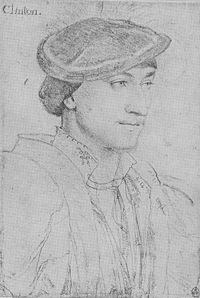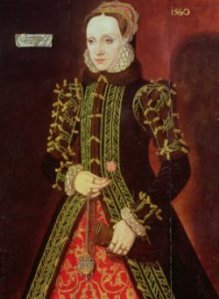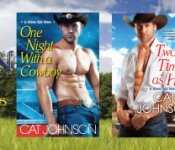Passport Ireland: Interview and Giveaway with Author Karen Harper
>
A New York Times and USA Today bestselling author, Karen Harper is a former college English instructor (The Ohio State University) and high school literature and writing teacher. A lifelong Ohioan, Karen and her husband Don divide their time between the midwest and the southeast, both locations she has used in her books. Besides her American settings, Karen loves the British Isles, where her Scottish and English roots run deep, and where she has set many of her historical Tudor-era mysteries and her historical novels about real and dynamic British women. Karen’s books have been published in many foreign languages and she won the Mary Higgins Clark Award for 2005. Karen has given numerous talks to readers and writers across the county. Her latest book – will be in stores February 1st
Dolls: With your new book coming out Feb. 1, what made you choose Elizabeth (Gera) Fitgerald as your heroine? What was it about her that inspired you?

|
| Elizabeth Fitzgerald |
KH: In reading about Queen Elizabeth I, I discovered she had a lady-in-waiting who was Irish (unusual) and who was a celebrated beauty and a red head. Ordinarily, this would be enough for the queen to distrust Gera, for Her majesty was a jealous woman. But they were long-time friends, who apparently argued, yet made up quickly. As I research Gera, I learned the tragedy of her family and how she had survived and thrived. Her great love story and her triumph made her a perfect Harper heroine. I love bold women who rise about tough time to triumph.
Dolls: When writing a book of fiction that focuses on a character in history- how do you make sure your characters get their “Happy Ending”? Or don’t they?
KH: All of the historic women I select as main characters have a happy ending at the finale of their story. That’s one reason I’ve never done a book on Anne Boleyn, per se, although she appears in many of my novels. If the character had unhappiness later in life, as did Joan of Kent in my novel , I stop the story at a high point in her life.

|
| Lord Lincoln |
Dolls: Was is difficult to research the background for ?
KH: I’m getting quite adept at Tudor-era research now, but I’d never done a book partly set in Ireland before. Since my heroine’s life touched the lives of many well-known people, I could glean bits and pieces about her from research on her father, her brother, her husband—and of course, her friend, Queen Elizabeth I. Sad, isn’t it, that most noble women are not the focus of books except in modern times when those of us who admire them search for them?
Dolls: Many of your books take place in Tudor England. It’s one of my (Noa) favorite historical periods, so just what is it about that time in history that makes you focus both your historical fiction and historical mystery series in that specific period?

|
| Elizabeth Fitzgerald- considered a great beauty |
KH: For years, I have been severely afflicted with ‘Tudormania.’ Perhaps it’s because I taught British Lit for years, or that I’m an Anglophile in general and have been to England many times. Why that period? What a royal family, what a people! So over the top: 6 wives? Beheadings? A virgin queen?
Dolls: The book starts out at County Kildare in Ireland – did you visit the region before writing the book? What was it like?
KH: I had a wonderful trip to Ireland several years before I found Gera as a character and decided to write her story. I did visit the Dublin and Kildare area but not Maynooth Castle. Wish I had, but the caretakers of the castle were kind enough to correspond with me and send me information.
Dolls: You have a list of historical fiction titles under your belt. Who would you say your favorite historical character is?

|
| ‘Bess’ Elizabeth I |
KH: Without a doubt, Bess Tudor herself. If you could see my office, you would find portraits of her,
dishes, statues. The woman was amazing. I must admit that I am most fond of her in her pre-crown years and her early years on the throne. That area is my specialty. In my nine-book The Queen Elizabeth , I start her out just before she attains the throne and keep her fairly young, so that it’s more believable that she would be an amateur sleuth. starts before her birth and ends shortly after she ascends. She is also quite young in .
Dolls: Many of your heroines fight against their fate and battle against heavy odds to get to where they wanted. Is this your favorite type of character to write?
KH: Absolutely. I love to study women who rose above terrible circumstances to achieve great things. I hope they can inspire modern readers. Even though our culture today is quite different from the Tudor era, people never truly change in their reactions to loss, love and life.
Dolls: Your books include modern-day romantic suspense stories, historical mysteries and books of historical fiction – how do you manage to “jump” between genres?
| Elizabeth I mystery |
KH: I’m not sure I can answer this, because it’s just something I do. However, I do have some guidelines: First, I never write modern and historical books at once. It’s a very different ‘voice,’ mindset, vocabulary and culture that is needed for each genre. I take a break between writing one genre, before I turn to the other. Actually, even within the modern books, it’s a challenge to evoke a particular world. For example, I have written four novels set among the Amish in Ohio and am writing more. That subculture of people has its own customs and vocabulary I need to stick to.
Dolls: With many authors dipping their hand in the Young Adult genre, do you plan to follow suit?
KH: Although I taught high school and college freshmen for many years, the YA market is not one I will dive into. However, I know a lot of good-reader, high school age girls enjoy my books. Especially the Queen Elizabeth I Mystery Series is suitable and popular with YAs.
Dolls: What next from Karen Harper?
KH: I just completed a novel my editor hasn’t even seen yet, called The Mistress of Mourning, set around 1500 in the bridge between the Medieval and Tudor eras. In a shift for me, the main character is fictional, but the secondary female is Elizabeth of York, the queen of Henry VII and the mother of Henry VIII. What a fascinating character she is! My heroine herself is a merchant class chandler (candle-maker) and wax artist who makes death masks. Of course, the novel includes a forbidden love story which works out in the end.
Dolls: Sounds sensational! You heard it here first everyone!
Dolls: As this is Passport: Ireland – Favorite things about Ireland?
KH: One thing I must mention here before talking about “The Isle of Erin” itself is that I greatly appreciate the endorsement for my Irish book from the writer I consider to be the queen of Irish stories, Morgan Llywelyn, author of and other books. But besides great writers and story-tellers of Ireland, I love the people. They are so friendly, and I love their brogue! It sounds like a stereotypical thing to say, but Ireland as I experienced it was so green, so lovely. The small villages are charming. And the music and dancing is something I really enjoy. I used to do Scottish Highland Dancing, but the Scots and the Irish share jigs and other music—the pipes for example (which my husband plays.)
Born into a first family of Ireland, with royal ties on both sides, Elizabeth Fitzgerald-known as Gera-finds her world overturned when Henry VIII imprisons her father, the Earl of Kildare, and brutally destroys her family. Torn from the home she loves, her remaining family scattered, Gera dares not deny the refuge offered her in England’s glittering royal court. There she must navigate ever-shifting alliances even as she nurtures her secret desire for revenge. From County Kildare’s lush green fields to London’s rough-and-tumble streets and the royal court’s luxurious pageantry, The Irish Princess follows the journey of a daring woman whose will cannot be tamed, and who won’t be satisfied until she restores her family to its rightful place in Ireland.








